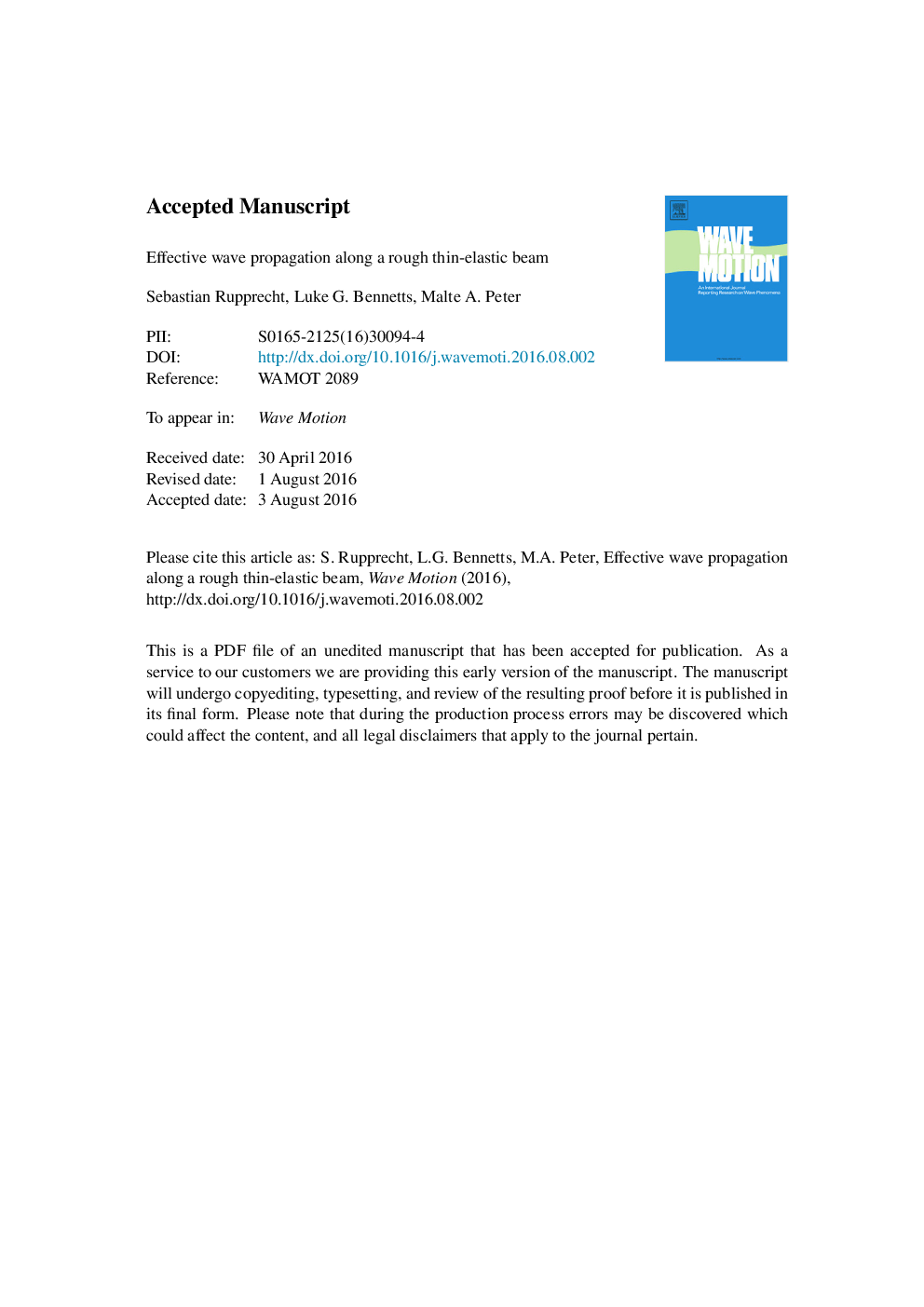| Article ID | Journal | Published Year | Pages | File Type |
|---|---|---|---|---|
| 5500537 | Wave Motion | 2017 | 21 Pages |
Abstract
Two methods for computing the complex-valued effective wavenumber of a rough beam in the context of linear time-harmonic theory are presented. The roughness of the beam is modelled as a continuous random process of known characteristic length and root-mean-square amplitude for either the beam mass or the beam rigidity. The first method is based on a random sampling method, with the effective wave field calculated as the mean of a large ensemble of wave fields for individual realisations of the roughness. The individual wave fields are calculated using a step approximation, which is validated for a deterministic problem via comparison to results produced by an integral equation approach. The second method assumes a splitting of the length scale of the fluctuations and an observation scale, employing a multiple-scale approximation to derive analytical expressions for the effective attenuation rate and phase change. Numerical comparisons show agreement of the results of the random sampling method and the multiple-scale approximation for a wide range of parameters. It is shown that the effective wavenumbers only differ by a real constant between the cases of varying beam mass and rigidity.
Keywords
Related Topics
Physical Sciences and Engineering
Earth and Planetary Sciences
Geology
Authors
Sebastian Rupprecht, Luke G. Bennetts, Malte A. Peter,
